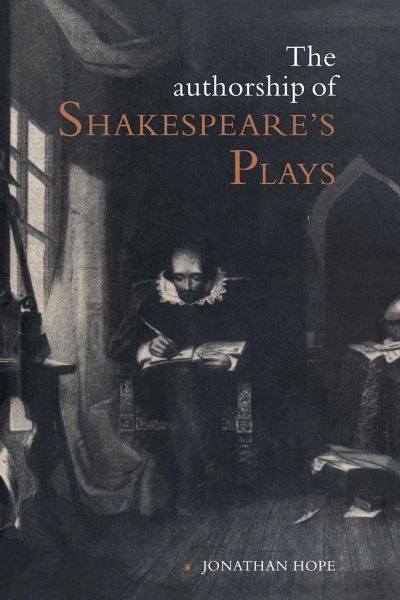
The Authorship of Shakespeare's Plays
A Socio-Linguistic Study

PAYBACK Punkte
25 °P sammeln!
This book introduces a method for determining the authorship of Renaissance plays by examining the rapid rate of change in English grammar.This book introduces a method for determining the authorship of Renaissance plays. Based on the rapid rate of change in English grammar in the late sixteenth- and early-seventeenth centuries, socio-historical linguistic evidence allows us to distinguish the hands of Renaissance playwrights within play texts. The present study focuses on Shakespeare: his collaborations with Fletcher and Middleton; and the apocryphal plays. Among the plays examined are Henry ...
This book introduces a method for determining the authorship of Renaissance plays by examining the rapid rate of change in English grammar.
This book introduces a method for determining the authorship of Renaissance plays. Based on the rapid rate of change in English grammar in the late sixteenth- and early-seventeenth centuries, socio-historical linguistic evidence allows us to distinguish the hands of Renaissance playwrights within play texts. The present study focuses on Shakespeare: his collaborations with Fletcher and Middleton; and the apocryphal plays. Among the plays examined are Henry VIII, The Two Noble Kinsmen, Macbeth, Pericles and Sir Thomas More. The findings of the book allow us to be more confident about the divisions of the collaborative plays, and confirm the status of Edward III as a strong candidate for inclusion in the canon. Using graphs to present statistical data in a readily comprehensible form, the book also contains a wealth of information about the history of the English language during a period of rapid and far-reaching change.
Review quote:
"The patience with which Hope has assembled and evaluated his data is matched by the tact with which he applies it." Times Literary Supplement
"...an interesting study..." Cryptologia
Table of contents:
List of tables and graphs; Preface; Acknowledgements; List of Abbreviations; Part I. Methodology: 1. Introduction; 2. The auxiliary 'do'; 3. Relative markers; 4. 'Thou' and 'you'; Part II: Applications: 5. Shakespeare as collaborator; 6. The Shakespeare apocrypha; Part III. Conclusion: 7. Summary of findings; Statistical appendix; Bibliography; Index.
This book introduces a method for determining the authorship of Renaissance plays. Based on the rapid rate of change in English grammar in the late sixteenth- and early-seventeenth centuries, socio-historical linguistic evidence allows us to distinguish the hands of Renaissance playwrights within play texts. The present study focuses on Shakespeare: his collaborations with Fletcher and Middleton; and the apocryphal plays. Among the plays examined are Henry VIII, The Two Noble Kinsmen, Macbeth, Pericles and Sir Thomas More. The findings of the book allow us to be more confident about the divisions of the collaborative plays, and confirm the status of Edward III as a strong candidate for inclusion in the canon. Using graphs to present statistical data in a readily comprehensible form, the book also contains a wealth of information about the history of the English language during a period of rapid and far-reaching change.
Review quote:
"The patience with which Hope has assembled and evaluated his data is matched by the tact with which he applies it." Times Literary Supplement
"...an interesting study..." Cryptologia
Table of contents:
List of tables and graphs; Preface; Acknowledgements; List of Abbreviations; Part I. Methodology: 1. Introduction; 2. The auxiliary 'do'; 3. Relative markers; 4. 'Thou' and 'you'; Part II: Applications: 5. Shakespeare as collaborator; 6. The Shakespeare apocrypha; Part III. Conclusion: 7. Summary of findings; Statistical appendix; Bibliography; Index.














